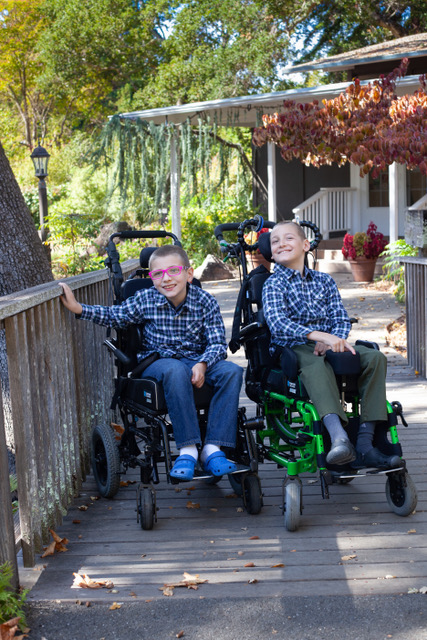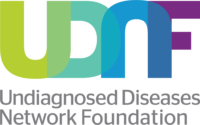25 Jan Danny Miller
 Our first son Carson was born in 2011, and our diagnostic odyssey began just a few months later when we began to notice that his developmental milestones weren’t quite tracking with other kids his age. His movements seemed stiff and jerky, and he had trouble rolling over and sitting up. After several visits to the pediatrician and a behavior specialist we were convinced that something was amiss, even though we were told not to worry. It was only after a visit to our local regional center that Carson was diagnosed with cerebral palsy in early 2013. He immediately began physical and occupational therapy to try and restore motor functions. In the meantime our younger son Chase was born in January of that year.
Our first son Carson was born in 2011, and our diagnostic odyssey began just a few months later when we began to notice that his developmental milestones weren’t quite tracking with other kids his age. His movements seemed stiff and jerky, and he had trouble rolling over and sitting up. After several visits to the pediatrician and a behavior specialist we were convinced that something was amiss, even though we were told not to worry. It was only after a visit to our local regional center that Carson was diagnosed with cerebral palsy in early 2013. He immediately began physical and occupational therapy to try and restore motor functions. In the meantime our younger son Chase was born in January of that year.
We didn’t suspect anything was amiss with Chase, but we soon noticed the same delays affecting him towards the end of 2013. It was clear that the boys shared some type of movement disorder, given the remote odds that two siblings would both have CP. Routine diagnostic lab tests provided no clues about what might be affecting the boys, and after cycling through five different neurologists and a visit with a genetics specialist, we had whole exome sequencing done in March 2015. The results came back in late 2015 with no confirmed pathogenic variants and only two or three variants of uncertain significance, none of which matched the boys’ phenotype. Another round of whole exome was done, and those too, showed only a few variants which did not explain the boys’ symptoms. Finally the boys had mitochondrial DNA testing and a targeted gene panel done, which turned up nothing. At that point our clinicians were stumped, and we were sad and angry as we watched our sons lose their ability to sit up and crawl on their own.
During all this I’d been scouring the internet reading any research I could find on conditions that can cause movement disorders. I had read about the NIH Undiagnosed Diseases Network and knew that it was the last stop for undiagnosed cases. We were desperate for answers, so in late 2015 I got together the boys’ medical histories and submitted an application. Carson and Chase were accepted into the program in December 2016, and we had our first appointment at the UDN site at Stanford in early 2017. After a series of visits and more labs yielded no clues, the boys had whole genome sequencing done, and in February 2018 we received word that they’d found a likely cause and learned of MEPAN syndrome and the MECR gene mutations that are involved. At that time there was only a single peer-reviewed paper on MEPAN, and seven MEPAN patients globally.
Getting that diagnosis allowed us to turn the page, connect with other MEPAN families and modify the boys’ supplement regimen to better support their mitochondrial function and address the faulty pathway involved. It also spurred us to form a foundation to create more awareness for MEPAN and fund research to help MEPAN patients. Knowledge is power, so we are working to have the MECR gene added to more diagnostic gene tests and helping to connect researchers that can study the condition. Our first MEPAN research project will start soon, and I am confident that we will find treatments that can help. We shared our story with UDN researchers and clinicians in June 2019, which you can read more about on our blog. We are grateful to the UDN team for their help in solving our mystery!



